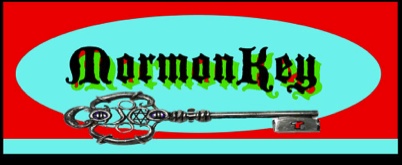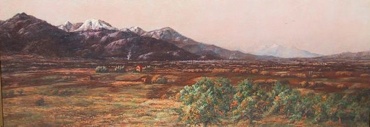
MormonKey Notes
The purpose and effort of this website is to disseminate new knowledge concerning the ever increasing interest in Mormon practice, Mormonism and the history of the Church of Jesus Christ of Latter-day Saints.
In 1947, the Mormon religion boasted approximately only 1 million members of the faith, when today in 2016, 70 years later, the religion boasts just under 16 million devotees strong and is growing and growing fast. From a more recent standpoint, around 15,644,199 registered Mormons practiced their faith in 2015, according to official numbers, when just a decade before in 2006, there were 12,868,606 registered Mormons. An increase of just under 4 million new members in just under ten years is a considerable increase when viewed from an exponential standpoint.
The Mormon religion is now starting to grow at an intrepidous rate, all in despite of several Mormons abounding that have concertedly abandoned the faith; whom have criticized it for not being wholly substantiated on facts and real evidence.
The effort and hope held by MormonKey.com and of the 'Mormon Key' is to provide substantial new information based on the latest historical discoveries and findings that is hoped shall provide more cohesive light as to the way Mormonism is viewed inside the LDS Church and Community of Christ Church, the latter being the recently converted remnant of the original Reorganized Church of Jesus Christ of Latter-day Saints, (also known as the RLDS Church), and outside the church as well, the world over and even among Mormon Fundamentalists.
The recent discoveries however that will be discussed and revealed on these website pages, is only being done so because of important key artifacts of past historical Mormon culture that have been surprisingly discovered in recent times. Such discoveries will continue to be revealed and even more artifacts of great historical significance will come forward - as the quest continues at MormonKey.com.
The discoveries and evaluations of such discoveries that are presented within the MormonKey.com platform are brought to all by international historian, artifacts and paleographic authentication expert Richard Warren Lipack.
With almost half a century of study of present man's technology and culture through its many key lost artifacts as they become discovered, starting in the early 1970's as a photographic art dealer and historian, Mr. Lipack expanded his sphere of interest by entering into the historic autograph market. By the late 1970's historian Lipack was handling the bulk of the collection and archives of inventor Thomas A. Edison stored in Edison's basement mansion Glenmont at West Orange, N.J. - much of it today in museums and private collections the world over.
Mr. Lipack's very effort at developing an expertise at the art of paleography actually began with two unsigned hastily drawn ink sketches coming out of the Edison 'basement load'; drawings that showed simple electrical circuits. Each large drawing on folded paper however had a lawyer's court evidence stamp on it dated 1887. Realizing that these drawings had to be important, considering the Edison source, historian Lipack noticed large hand inked "A's" - "B's" - "C's" - "D's" and "E's" marked next to most of the electrical circuit paths drawn on to the two large pieces of paper. Subsequent access and comparisons to early 1880's handwritten letters reproduced in Edison associate and company historian Francis Jehl's 1930's period three part Edison history series entitled: Menlo Park Reminiscences - was made. Exact similarities between the five letters "A" through "E" were sought between the handwritten Edison autographed letter 'exemplars' found in the Jehl Edison history books with that matched letters found in the unsigned circuit drawings dated 1887. When the paleographic comparative process was conducted, perfect matches between the two separated 'standard' elements were found. Most significantly, although Edison did not sign the papers, the papers were signed 25 snd 30 August 1887 and witnessed and legally notorized by non other than Edison's chief law counsel H. (Henry) W. Seely.
From all of this it was then realized that just before Edison - General Electric was founded by Edison and Elihu Tomson in 1888, Edison was involved in defending his lawsuits surrounding his development of the Edison "three-wire" D.C. electrical systems. These two hand executed drawings of Edison's "three-wire" system of Direct Current (DC) electricity transmission were undoubtably maintained as 'evidence' in Edison's proprietary court cases at the time.
With the paleographic process employed successfully to authenticate the two unsigned Edison drawings as now conclusively drawn by Edison - and in that the documents were actually drawn to be core evidence in the Edison "three-wire" lawsuits in the late 1880's, historian Lipack began to learn the use of an important tool which has become applied to much bigger efforts of authentication since this time - all leading to the creation of this, the MormonKey.com.
Aside from this, it should be noted that in the early 1990's, Richard Warren Lipack discovered in a collection originating in an estate out of Washington, D.C. - the very letter written by inventor Thomas A. Edison on 22 October 1879 to Mrs. Eleanor Hallowell Stroud of Stroudsburg, Pennsylvania discussing his work on the electric light bulb on the very day he invented it!
Here in this remarkable letter discovered by Richard Warren Lipack and consigned to Herman Darvik Autograph auctions and sold by Mr. Darvik, Edison stated that he was "busily engaged on the electric light." This statement by Edison was written on the very day Edison had finally perfected and essentially 'invented' the world's first successfully operating electric light bulb, all which utilized a carbonized filament of bamboo.
Futher beyond this time, Mr. Lipack's expertise at discovery began to branch out internationally, when the major discovery of Sir William Fothergill Cooke's only engineer's, machinist and builder's manuscript journal for the very first world's perfected commercial telegraph system dating to 1836-1842 extant came about. From it's initial discovery by Mr. Lipack in the late 1990's, to the development of its historical importance through written treatises and a documentary video motion picture published by Richard Warren Lipack as well, the paleographic process was again applied more appropriately where it could be displayed publicly for impartial scholarly review. Full authentication as to the manuscript journal conclusively being in the hand of telegraph co-inventor William Fothergill Cooke himself, for Cooke's partnership with co-inventor Sir Charles Wheatstone came about following over a decade of study and evaluation by Richard Warren Lipack.
For further information on this historic discovery - please go here to these following links;

"MORMONKEY: The Key to News and History of the Mormon Faith"
